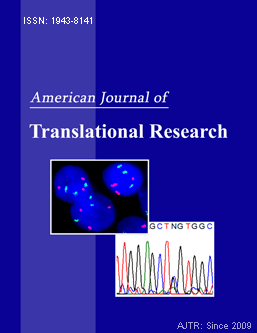 When the merde hits the fan, blame the translator. That’s Rule 1 of botched international diplomacy — and, evidently, botched international science.
When the merde hits the fan, blame the translator. That’s Rule 1 of botched international diplomacy — and, evidently, botched international science.
Otolaryngology researchers in China have lost their 2018 paper in the American Journal of Translational Research for what they’re calling (with some degree of chutzpah) language barriers.
The article, “Therapeutic ultrasound potentiates the anti-nociceptive and anti-inflammatory effects of curcumin to postoperative pain via Sirt1/NF-κB signaling pathway,” came from group whose primary affiliation was the Second Military Medical University in Shanghai. (It hasn’t been cited, according to Clarivate’s Web of Science.) However, the list of authors also included several scientists in Germany.
Evidently, the Germans were most unzufrieden.
According to the retraction notice:
Due to the obstacles in the language communication between Chinese and German, we included the names of Drs. Robert Mlynski, Stefan Plontke and Haibin Liu as the co-authors of this paper without their permission. We have realized that this is a very inappropriate practice and a serious scientific fraud after some colleagues pointed this out to us. Therefore, we would like to retract this paper completely. We sincerely apologize to Drs. Haibin Liu, Robert Mlynski and Stefan Plontke for our fault and the inconvenience and potential damages to their reputation.
We also sincerely apologize for cheating reviewers and editors by creating faked E-mail accounts of these three “coauthors” and all inconveniences that might have resulted from our faults.
Although this notice pretends at transparency, it’s a mess that underscores why authors should never be allowed to write retraction statements in cases of misconduct.
The authors copped to forging email addresses of co-authors who weren’t involved in the research … so why did the journal allow them to claim the problem boiled down to “obstacles in … language communication”?
They also admit that what they did amounted to “serious scientific fraud” … but claim that they didn’t have that epiphany until “some colleagues pointed this out to us” … after they created fake email addresses.
We asked the editor of the journal, Wen-Hwa Lee, of UC Irvine, for some clarity here but haven’t heard back. We also emailed Mlynski and Plontke but have yet to receive a reply.
Hat tip: Rolf Degen
Like Retraction Watch? You can make a tax-deductible contribution to support our growth, follow us on Twitter, like us on Facebook, add us to your RSS reader, sign up for an email every time there’s a new post (look for the “follow” button at the lower right part of your screen), or subscribe to our daily digest. If you find a retraction that’s not in our database, you can let us know here. For comments or feedback, email us at [email protected].
Sounds quite puzzle!Cant find the correspondence author in the adrressed hospital!Haibin Liu, is the same like Chinese name.How such the so -called language barriers to mistake co-authors in the American Journal of Translational Research .What is more,I Check the correspondence author Jing-Juan Huang, Department of Cardiology, Shanghai Chest Hospital, Shanghai Jiaotong University, Huaihai Xi Road 241, Shanghai 200030, China. E-mail: [email protected].,both in Shanghai Chest hospital,or Xinhua Hospital.
As a nature science lover and also a part time reporter of 知识分子(zhishifenzi,or the Intelligence ).I like the RetractionWatch very much.It is very important for the whole science research,push the researches and researchers to go in the right way.Yes, I write some good reports,they are from RetractionWatch..
I check the related papers , under the correspondence author Duan Junli, those 3 authors public 4 papers in one year 2015,and it begins from 2014.how such papers come out, they are just 3 month from received to pubilc,? An Hu, Jing-Juan Huang, Rui-Lin Li,, So,it seems the three authors were quite productive ,or somethings else behind.See,the Am J Transl Res,where they public most,from 2014,5—2016.9,Huang JJ public 8 American Journal of Translational Research papers.
Oh,there is one exception for it receive to public in one year “Pulsed electromagnetic field improves postnatal neovascularization in response to hindlimb ischemia” https://www.ncbi.nlm.nih.gov/pmc/articles/PMC4448185/
but ironically,here comes the almost same paper title “Pulsed electromagnetic field improves cardiac function in response to myocardial infarction”
https://www.ncbi.nlm.nih.gov/pmc/articles/PMC4058309/
http://daoshi.shsmu.edu.cn/Pages/TeacherInformationView.aspx?uid=B14D54A9-9D22-4D2C-B107-C22DAC3C7A38&from=s&pId=&tId=722
reports I write from retractionwatch about China or America research,
http://www.zhishifenzi.com/news/multiple/4312.html
http://www.zhishifenzi.com/news/multiple/4390.html
http://www.zhishifenzi.com/news/multiple/4357.html
I remain astonished that any journals from “e-Century” are still indexed in PubMed.
They do not appear to be indexed in Medline, the subset of Pubmed which selects journals for inclusion according to their quality.
Pubmed includes other types of records, such as Pubmed Central.
An explanation of the differences
https://www.nlm.nih.gov/bsd/difference.html